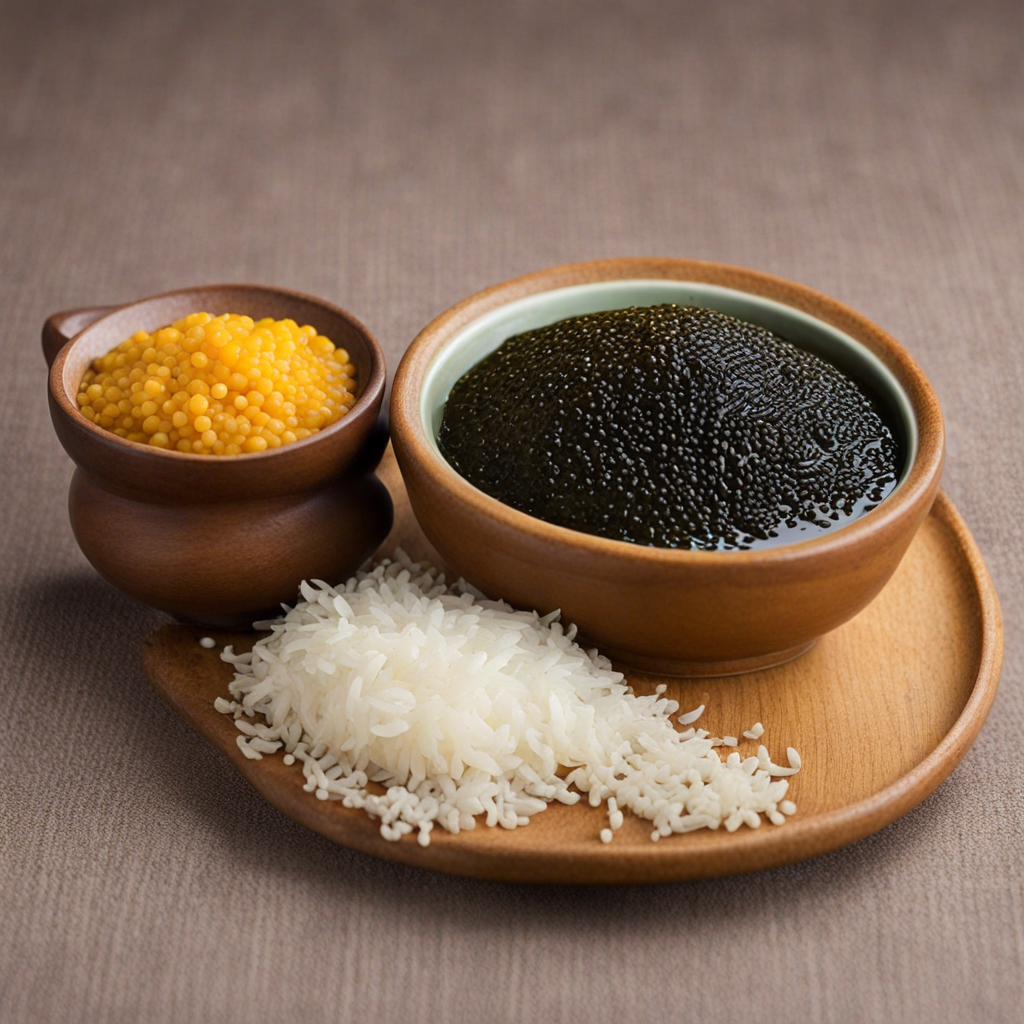Ogiri
Ogiri is a traditional fermented condiment originating from Nigeria, particularly popular in the southeastern and southwestern regions of the country. Its historical roots can be traced back centuries, as it has been a staple in local diets and culinary practices. The fermentation process used to produce Ogiri dates back to ancient times, when communities sought methods to preserve food and enhance its flavor. The use of fermentation also reflects a broader cultural practice, where various forms of fermentation are utilized to prolong the shelf life of perishable ingredients. The flavor profile of Ogiri is intensely pungent and complex, often drawing comparisons to other fermented foods like miso or tempeh. Its aroma can be quite strong, sometimes overwhelming, which can be off-putting to those unfamiliar with it. However, for many Nigerians, the aromatic richness and umami depth that Ogiri brings to dishes are simply unparalleled. The taste is salty and savory, with a slightly earthy undertone, making it an excellent flavor enhancer that adds depth to soups, stews, and sauces. Preparation of Ogiri involves a meticulous process that requires patience and skill. Traditionally, it is made from fermented locust beans (Parkia biglobosa), which are also known as African locust beans. The beans are first cooked until soft, then allowed to ferment naturally for several days. This fermentation process is critical, as it develops the distinctive flavors and aromas that characterize Ogiri. Once fermented, the locust beans are mashed into a paste, which can be shaped into small
How It Became This Dish
The History of Ogiri: A Flavorful Journey Through Time Introduction Ogiri, a traditional fermented condiment integral to many Nigerian cuisines, particularly in the southeastern regions, is known for its distinctive pungent aroma and rich umami flavor. This unique food not only enhances the taste of dishes but also carries deep cultural significance and a rich history that mirrors the culinary diversity of Nigeria. This exploration of Ogiri reveals its origins, cultural importance, and evolution over time. Origins and Traditional Preparation The origins of Ogiri can be traced back to the indigenous communities of southeastern Nigeria, particularly among the Ibo (Igbo) people. The word "Ogiri" itself is derived from the Igbo language, where it refers to this specific fermented condiment. The primary ingredient for Ogiri is usually locust beans (Parkia biglobosa), which are native to West Africa. The process of creating Ogiri begins with the harvesting of the locust beans, which are then boiled to soften the seeds. After boiling, the seeds are fermented by wrapping them in leaves and allowing them to sit for several days to develop the characteristic aroma and flavor. This fermentation process is crucial as it not only enhances the taste of the condiment but also serves as a method of preservation. Fermentation is a time-honored technique in many cultures, and in Nigeria, it plays a significant role in food preparation, ensuring that ingredients can be stored and utilized throughout the year, especially during seasons of scarcity. Cultural Significance Ogiri is more than just a flavor enhancer; it is a cultural symbol within many Nigerian communities. In Igbo culture, the preparation and consumption of Ogiri is often associated with communal gatherings and celebrations. It is a staple ingredient in traditional dishes such as "Ofe Nsala" (white soup) and "Nkwobi" (cow foot dish), showcasing its versatility and essential role in Nigerian culinary practices. The condiment carries significant nutritional value as well. It is rich in protein and is often used as a source of nourishment in rural areas where access to diverse food sources may be limited. The fermentation process also enhances the bioavailability of nutrients, making Ogiri not just a flavoring agent but a functional food that contributes to the diet's overall health. Development Over Time The historical development of Ogiri reflects broader changes in Nigerian society, including urbanization, globalization, and the impact of modern culinary practices. Traditionally, Ogiri was made in households, passed down through generations, with families often guarding their unique recipes. However, as urbanization increased, the production of Ogiri began to shift towards commercial enterprises. Today, many entrepreneurs have recognized the demand for Ogiri, leading to the establishment of small-scale factories that produce packaged Ogiri for local and international markets. Despite the rise in industrial production, many families continue to prepare Ogiri using traditional methods. This duality illustrates the tension between preserving cultural heritage and adapting to modern economic realities. The traditional fermentation process remains revered, with many believing that homemade Ogiri retains superior flavor and authenticity compared to commercially produced alternatives. Globalization and Contemporary Trends In recent years, globalization has had a profound impact on the appreciation of Ogiri beyond Nigeria's borders. The increasing interest in African cuisine worldwide has brought Ogiri into the spotlight, with chefs and food enthusiasts exploring its unique flavor profile. Social media platforms and food blogs have played a pivotal role in showcasing the versatility of Ogiri, inspiring chefs to incorporate it into innovative dishes, from soups and stews to fusion cuisine. Furthermore, the rise of the “foodie” culture has led to a renewed interest in traditional ingredients like Ogiri among people seeking authentic culinary experiences. This phenomenon has encouraged a younger generation to reconnect with their culinary roots, often experimenting with traditional ingredients in modern recipes. Such adaptability ensures that Ogiri remains relevant in contemporary cooking while honoring its historical significance. Challenges and Future Prospects Despite its cultural and culinary importance, Ogiri faces several challenges. The traditional production methods are labor-intensive and may not be sustainable in the face of rising demand. Additionally, the stigma associated with its strong aroma can deter potential consumers, particularly those unfamiliar with African cuisine. To address these challenges, advocates for Ogiri emphasize the importance of education and awareness, encouraging people to appreciate not only the flavors but also the cultural narratives that accompany this unique condiment. Looking to the future, the continued globalization of cuisine presents both opportunities and challenges for Ogiri. As more people around the world become aware of African culinary traditions, there is potential for Ogiri to carve out a niche in the global food market. This could lead to increased demand for traditional, sustainably produced Ogiri, benefiting local producers and communities. Conclusion Ogiri embodies a rich tapestry of history, culture, and culinary tradition in Nigeria. Its origins among the Igbo people reflect a deep-rooted connection to the land and community, while its development over time illustrates the adaptability of cultural practices in the face of change. As Ogiri continues to gain recognition on the global stage, it serves as a reminder of the importance of preserving traditional foods and the stories that accompany them. With its unique flavor and cultural significance, Ogiri stands as a testament to the enduring legacy of Nigerian cuisine and its ability to bridge the past with the present and future.
You may like
Discover local flavors from Nigeria






